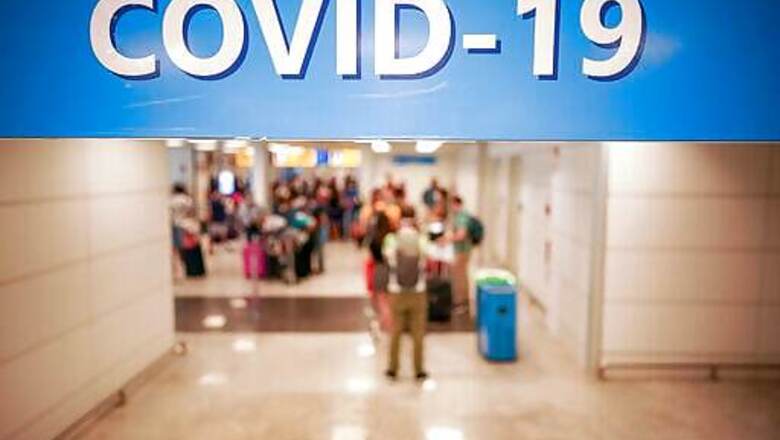
views
VALLETTA, Malta: During the first four months of Europes coronavirus outbreak, the Mediterranean island nation of Malta recorded just 673 infections. By mid-July, it had all but eliminated COVID-19 with only three active cases.
Yet in the last six weeks, Maltas confirmed caseload has more than doubled. Malta is now considered an at-risk destination by some European countries, which have imposed travel warnings or testing requirements on anyone who goes there.
Its quite a reversal of fortunes for Malta, which on Friday registered its first death since May.
Earlier this week, the government closed nightclubs again, limited gatherings to 15 people and mandated mask-wearing in public places indoors with a 100-euro ($117) fine for offenders, all in a bid to radically change course.
All these measures are based on the principle of social distancing. We felt that they had to be strengthened in several areas, Maltas public health chief, Charmaine Gauci, said in announcing the new rules.
While Maltas numbers are still small the country only has 500,000 people and pale in comparison to bigger European countries that were hard hit in the spring, its infection curve is following that of Greece and Cyprus. Those southern Mediterranean countries also managed to limit infections early on with lockdowns, but are seeing surges now in part due to summer travel.
In all, Malta recorded 673 cases between March 7-July 7, but in the last six weeks the number of registered infections more than doubled to 1,546. In all, 10 people have died.
The infections exclude more than 100 migrants who tested positive after being rescued by the Maltese army and were placed in quarantine. Another 118 migrants rescued by Malta on Thursday and quarantined will be tested Saturday.
Malta reopened its airport and ports on July 15, three months after shutting them down. But its more recent surge in cases came mostly from group activities that were allowed to resume after Malta eased its lockdown.
Parties, re-opened nightclubs and band marches for traditional Maltese religious feasts were mostly responsible for new infections, authorities say.
Thanks to Maltas new designation as a virus hotspot, residents and tourists leaving Malta now have to be tested to enter Italy and Greece, or be placed in quarantine upon arrival in Britain and Norway. Other nations are recommending against unnecessary travel to Malta.
Schools are set to reopen Sept. 28, but teachers unions have warned that might not be possible unless strict protocols are in place.
The Maltese government has opened new testing centers to meet with the growing demand, carrying out up to 3,000 tests every day, some 50% more tests than during the first wave.
And yet amid the surge, Malta on Friday welcomed the first cruise ship since it reopened its ports. The MSC Grandiosa, which left Genoa on Sunday, entered Grand Harbour in what is being billed as the first Mediterranean cruise ship voyage after Europe’s coronavirus lockdown.
___
Disclaimer: This post has been auto-published from an agency feed without any modifications to the text and has not been reviewed by an editor
















Comments
0 comment